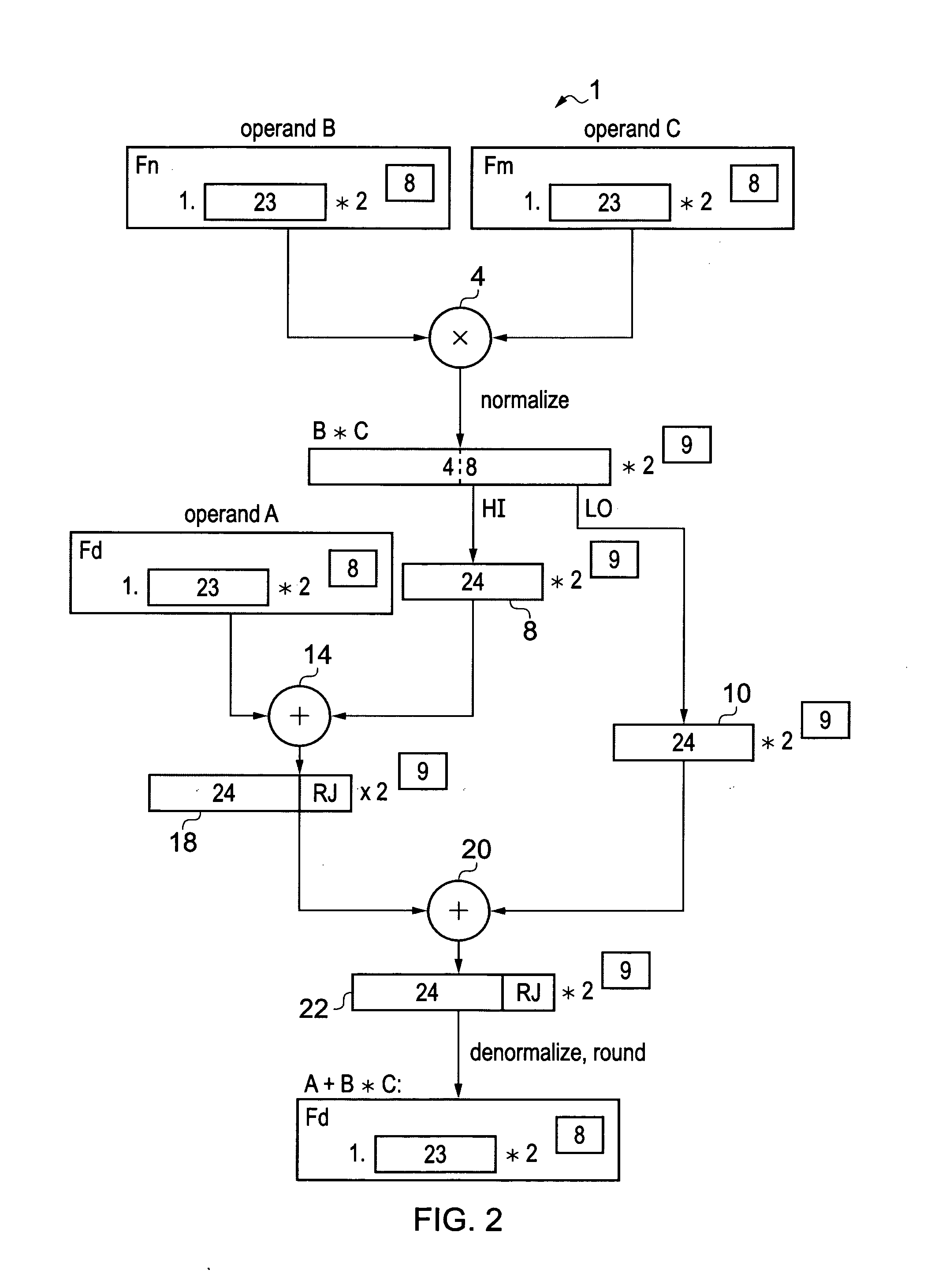Apparatus and method for performing fused multiply add floating point operation
a technology of adding circuitry and apparatus, applied in the field of data processing, can solve the problems of reducing precision at the expense of extra range, and achieve the effect of reducing the amount of processing performed by the adding circuitry
- Summary
- Abstract
- Description
- Claims
- Application Information
AI Technical Summary
Benefits of technology
Problems solved by technology
Method used
Image
Examples
Embodiment Construction
[0085]FIG. 2 schematically illustrates an apparatus 1 for performing a fused multiply add operation. In the apparatus, operands A, B and C are provided to the apparatus 1. In the example where single precision floating point representation is used, each operand has a 23-bit fractional part F of the mantissa (usually in the form 1.F, although the mantissa could be in the denormal form 0.F) and an 8-bit exponent E. Note that, while in the Figures the exponent is often indicated in the form 2[x] (where X is the number of bits used to store the exponent), the actual number of places by which the radix point of the floating point value is shifted relative to the mantissa is the X-bit exponent value biased by 127 as shown in FIG. 1. Also, while not illustrated in FIGS. 2-9, each floating point value would also have a sign bit S indicating whether the value is positive or negative.
[0086]Operands B and C are multiplied together by a multiplier 4. The multiplier 4 generates a normalized prod...
PUM
 Login to View More
Login to View More Abstract
Description
Claims
Application Information
 Login to View More
Login to View More - R&D
- Intellectual Property
- Life Sciences
- Materials
- Tech Scout
- Unparalleled Data Quality
- Higher Quality Content
- 60% Fewer Hallucinations
Browse by: Latest US Patents, China's latest patents, Technical Efficacy Thesaurus, Application Domain, Technology Topic, Popular Technical Reports.
© 2025 PatSnap. All rights reserved.Legal|Privacy policy|Modern Slavery Act Transparency Statement|Sitemap|About US| Contact US: help@patsnap.com



